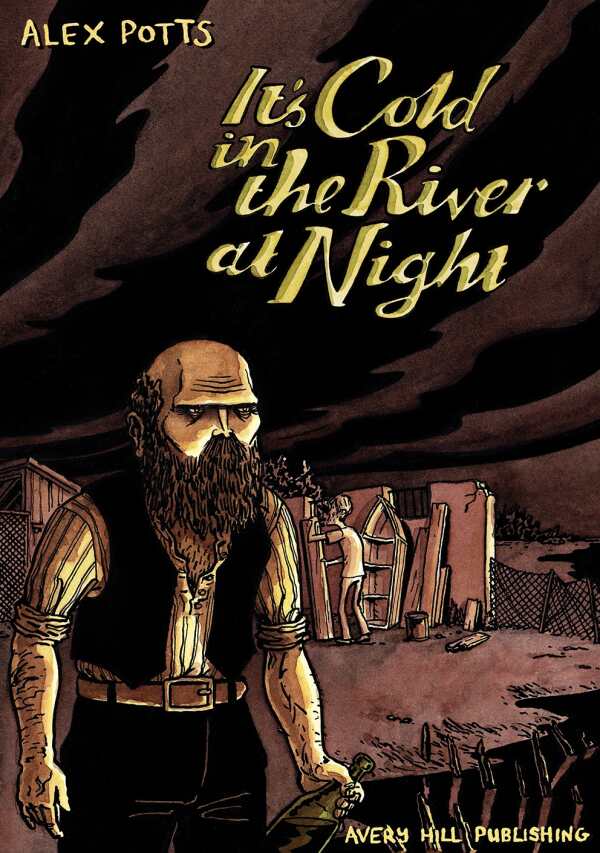It's Cold in the River at Night
The color palette and shading are subtle but effective in this psychological drama that seems simple but perhaps isn’t.
Alex Potts uses the strange and isolated atmosphere of a fictional, aging, river-bordered town to cast a moody spell with his graphic novel It’s Cold in the River at Night.
Carl and Rita, a young couple, are renting a ramshackle house, hoisted above the water line on stilts, that is only accessible by boat. She uses her time to work on her dissertation, and Carl becomes interested in local folklore and customs, including the fact that in earlier times, coffins for the townspeople were built in the shape of boats.
Carl seeks out a carpenter who still makes the coffins, determined to become his apprentice, while Rita deals with the romantic advances of their landlord. The tension between Carl and Rita escalates, and the book’s ending is shocking and provocative.
It’s Cold in the River at Night is an unusual book in that its central character, Carl, isn’t particularly likeable, even before jealousy and inadequacy begin to have an effect on him. Moral ambiguity is abundant—the carpenter abuses Carl, and Carl abuses Rita; the question of whether Carl deserves his treatment is central to the book’s sense of karma and, in the end, its hint of potential renewal.
Potts is a master of ratcheting up the tension throughout the story, and as Carl becomes more paranoid and erratic, his transition from a fairly typical restless young man to something much more unbalanced and dangerous is convincing.
Potts’s art is mostly clear, straightforward storytelling, which fits the story well. At key moments, however, he demonstrates a practiced sense of how to convey emotion effectively via atypical panel arrangements, and he knows when to allow a full page of art tell the story without text. His color palette and shading are subtle but effective.
A psychological drama that seems simple but perhaps isn’t, It’s Cold in the River at Night is is gripping and propulsive to its end—but even better, its final page instills an instant desire to go back and reread it.
Reviewed by
Peter Dabbene
Disclosure: This article is not an endorsement, but a review. The publisher of this book provided free copies of the book to have their book reviewed by a professional reviewer. No fee was paid by the publisher for this review. Foreword Reviews only recommends books that we love. Foreword Magazine, Inc. is disclosing this in accordance with the Federal Trade Commission’s 16 CFR, Part 255.

